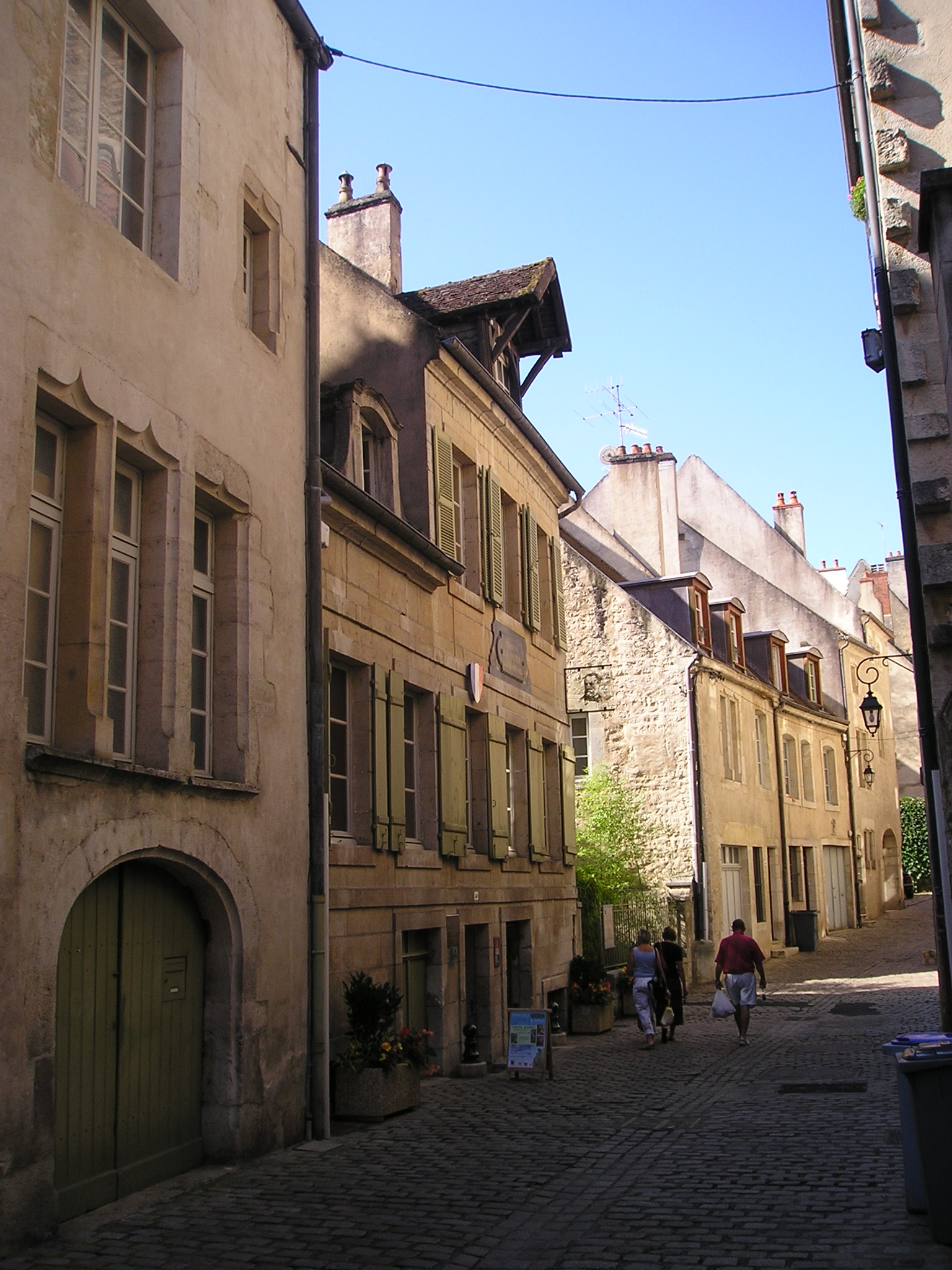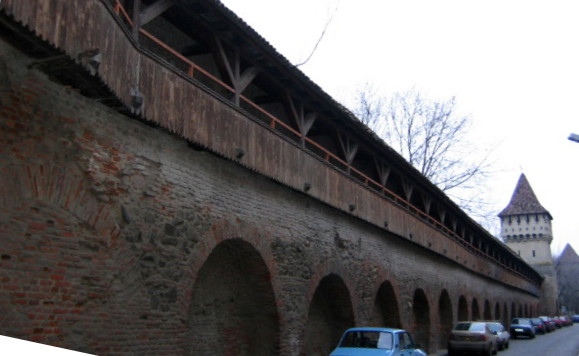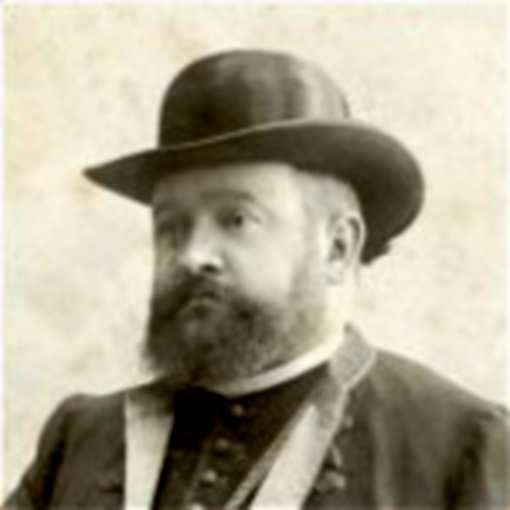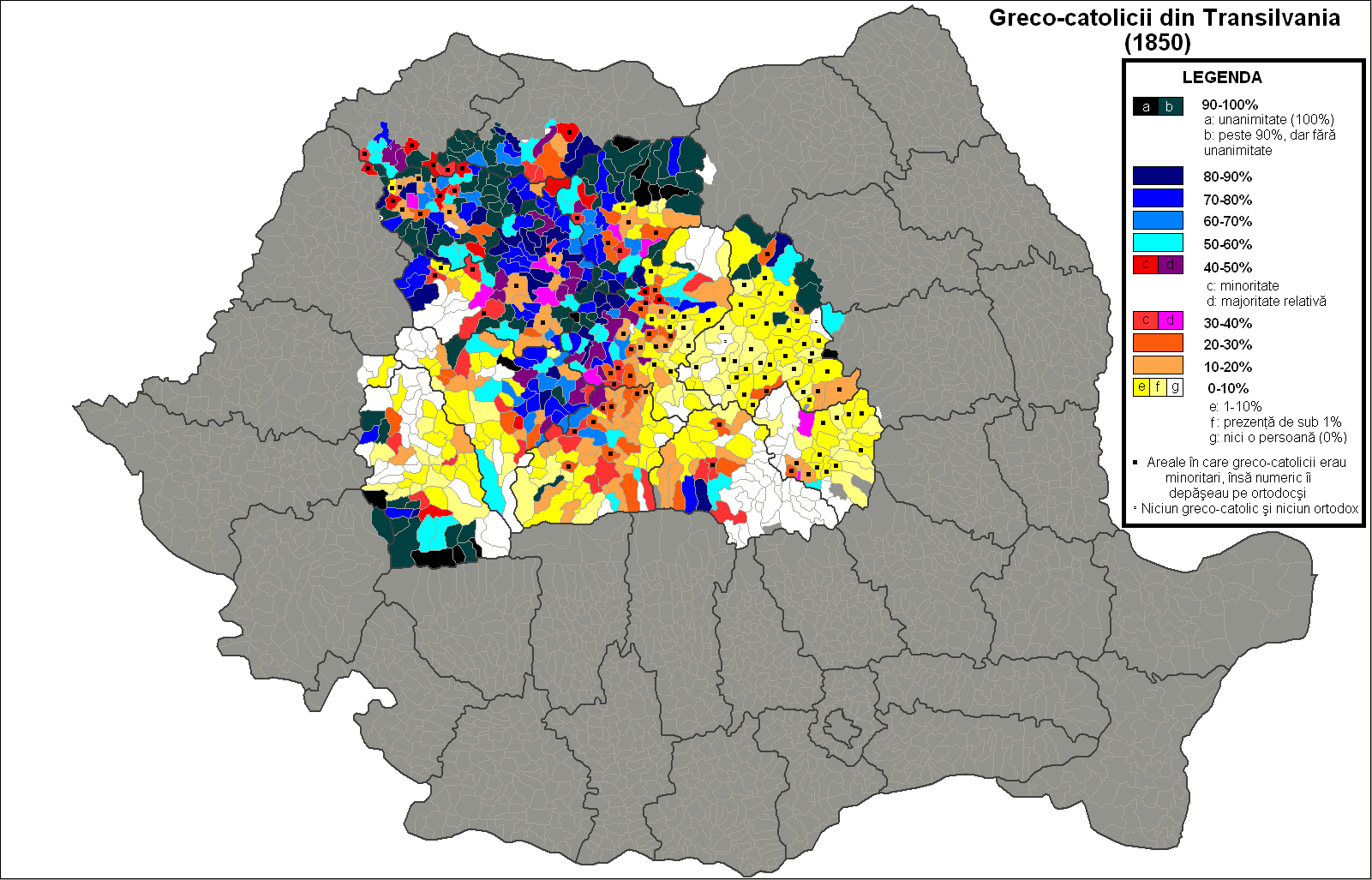|
Iuliu Hațieganu
Iuliu Hațieganu (April 14, 1885 – September 4, 1959) was a Romanian internist doctor particularly recognized for research done in the field of tuberculosis. He founded in Cluj a valuable school of internal medicine. Today, Cluj University of Medicine and Pharmacy bears his name. He was a member of the Romanian Academy and brother of politician Emil Hațieganu. He was also an architect, and his work was part of the architecture event in the art competition at the 1936 Summer Olympics. Early life and studies Iuliu Hațieganu was born on April 14, 1885, in the village of Magyarderzse, Kingdom of Hungary (today Dârja, Romania) in the Someș Valley, the fifth of 13 children of the Romanian Greek Catholic priest Hațieganu. He began studying at Balázsfalva (today Blaj, Romania), where he had as colleague the future bishop Iuliu Hossu, then studied at the Faculty of Medicine of Franz Joseph University. After completing his doctorate in 1910, he became assistant to prof ... [...More Info...] [...Related Items...] OR: [Wikipedia] [Google] [Baidu] |
Panticeu
Panticeu (; ) is a commune in the northern part of Cluj County, Transylvania, Romania. It is composed of five villages: Cătălina (''Szentkatolnadorna''), Cubleșu Someșan (''Magyarköblös''), Dârja (''Magyarderzse''), Panticeu, and Sărata (''Szótelke''). Demographics According to the census from 2002 there was a total population of 2,001 people living in this commune, of which 85.25% were ethnic Romanians, 10.49% ethnic Roma, and 4.19% Hungarians Hungarians, also known as Magyars, are an Ethnicity, ethnic group native to Hungary (), who share a common Culture of Hungary, culture, Hungarian language, language and History of Hungary, history. They also have a notable presence in former pa .... At the 2011 census, there were 1,844 inhabitants; of those, 77.01% were Romanians, 13.12% Roma, and 3.69% Hungarians. At the 2021 census, Panticeu had a population of 1,717, including 72.57% Romanians, 17.12% Roma, and 2.15% Hungarians. Natives * Iuliu Hațieganu (1885 – 19 ... [...More Info...] [...Related Items...] OR: [Wikipedia] [Google] [Baidu] |
Budapest
Budapest is the Capital city, capital and List of cities and towns of Hungary, most populous city of Hungary. It is the List of cities in the European Union by population within city limits, tenth-largest city in the European Union by population within city limits and the List of cities and towns on the river Danube, second-largest city on the river Danube. The estimated population of the city in 2025 is 1,782,240. This includes the city's population and surrounding suburban areas, over a land area of about . Budapest, which is both a List of cities and towns of Hungary, city and Counties of Hungary, municipality, forms the centre of the Budapest metropolitan area, which has an area of and a population of 3,019,479. It is a primate city, constituting 33% of the population of Hungary. The history of Budapest began when an early Celts, Celtic settlement transformed into the Ancient Rome, Roman town of Aquincum, the capital of Pannonia Inferior, Lower Pannonia. The Hungarian p ... [...More Info...] [...Related Items...] OR: [Wikipedia] [Google] [Baidu] |
Tudor Arghezi
Ion Nae Theodorescu (21 May 1880 – 14 July 1967) was a Romanian writer who wrote under the pen name Tudor Arghezi (. He is best known for his unique contribution to poetry and children's literature. Biography Early life He graduated from Saint Sava High School in October 1896, started working to pay for his studies, and made his debut in 1896, publishing verses in Alexandru Macedonski's magazine ''Liga Ortodoxă'' under the name ''Ion Theo''. Soon after, Macedonski, the herald of Romanian Symbolism, publicized his praise for the young poet: "This young man, at an age when I was still prattling verses, with an audacity that knows no boundaries, but not yet crowned by the most glittering success, parts with the entire old versification technique, with all banalities in images in ideas that have for long been judged, here and elsewhere, as a summit of poetry and art." He began stating his admiration for Symbolism and other trends pertaining to it (such as the Vienna Secess ... [...More Info...] [...Related Items...] OR: [Wikipedia] [Google] [Baidu] |
Louis Pasteur
Louis Pasteur (, ; 27 December 1822 – 28 September 1895) was a French chemist, pharmacist, and microbiologist renowned for his discoveries of the principles of vaccination, Fermentation, microbial fermentation, and pasteurization, the last of which was named after him. His research in chemistry led to remarkable breakthroughs in the understanding of the causes and preventions of diseases, which laid down the foundations of hygiene, public health and much of modern medicine. Pasteur's works are credited with saving millions of lives through the developments of vaccines for rabies vaccine, rabies and anthrax vaccine, anthrax. He is regarded as one of the founders of modern bacteriology and has been honored as the "father of bacteriology" and the "father of microbiology" (together with Robert Koch; the latter epithet also attributed to Antonie van Leeuwenhoek). Pasteur was responsible for disproving the doctrine of spontaneous generation. Under the auspices of the French Aca ... [...More Info...] [...Related Items...] OR: [Wikipedia] [Google] [Baidu] |
Hippocrates
Hippocrates of Kos (; ; ), also known as Hippocrates II, was a Greek physician and philosopher of the Classical Greece, classical period who is considered one of the most outstanding figures in the history of medicine. He is traditionally referred to as the "Father of Medicine" in recognition of his lasting contributions to the field, such as the use of prognosis and clinical observation, the systematic categorization of diseases, and the (however misguided) formulation of Humorism, humoral theory. His studies set out the basic ideas of modern-day specialties, including surgery, urology, neurology, acute medicine and Orthopedic surgery, orthopedics. The Hippocratic school of medicine revolutionized ancient Greek medicine, establishing it as a discipline distinct from other fields with which it had traditionally been associated (theurgy and philosophy), thus establishing medicine as a profession. However, the achievements of the writers of the Hippocratic Corpus, the practitioners ... [...More Info...] [...Related Items...] OR: [Wikipedia] [Google] [Baidu] |
Sibiu
Sibiu ( , , , Hungarian: ''Nagyszeben'', , Transylvanian Saxon: ''Härmeschtat'' or ''Hermestatt'') is a city in central Romania, situated in the historical region of Transylvania. Located some north-west of Bucharest, the city straddles the Cibin River, a tributary of the Olt River. Now the seat of Sibiu County, between 1692 and 1791 and 1849–65 Sibiu was the capital of the Principality of Transylvania. Until 1876, the Hecht hause in Sibiu served as the seat of the Transylvanian Saxon University. Nicknamed ''The Town with Eyes'' for the eyebrow dormers on many old buildings, the town is a popular tourist destination. It is known for its culture, history, cuisine, and architecture. In 2004, its historical center was added to the tentative list of UNESCO World Heritage Sites. Sibiu was subsequently designated the European Capital of Culture in 2007, along with Luxembourg City. One year later, it was ranked "Europe's 8th-most idyllic place to live" by ''Forbes''. Sibi ... [...More Info...] [...Related Items...] OR: [Wikipedia] [Google] [Baidu] |
Great National Assembly Of Alba Iulia
The Great National Assembly of Alba Iulia () was an assembly held on 1 December 1918 in the city of Alba Iulia in which a total of 1,228 delegates from several areas inhabited by ethnic Romanians declared the union of Transylvania with Romania. It was summoned by the Romanian National Council. Regular ethnic Romanian civilians were also called to participate, and these came from all regions inhabited by Romanians; in total, the assembly was attended by some 100,000 people. The union of Transylvania with Romania was declared with the adoption of the during the assembly. Although the assembly was announced for 1 December, debates on Transylvania's accession into Romania between prominent representatives of the Romanian National Central Council started already on 30 November. At the debate, chaired by Ștefan Cicio Pop, the present Social Democratic Party of Transylvania and Banat, social democrats, including Ioan Flueraș, argued in favour of autonomy for Transylvania within Great ... [...More Info...] [...Related Items...] OR: [Wikipedia] [Google] [Baidu] |
Great Union
In Romanian historiography, the Great Union () or Great Union of 1918 () was the series of political unifications the Kingdom of Romania had with several of the Romanian historical regions, starting with Bessarabia on 27 March 1918, continuing with Bukovina on 28 November 1918 and finalizing with Transylvania (on its broad meaning) on 1 December 1918 with the declaration of the union of this region with Romania during an assembly at the city of Alba Iulia. Romanians also consider several other events as preludes to the Great Union, such as the unification of Moldavia and Wallachia (also known as the Little Union, ) in 1859 or the independence of the country and the annexation of Northern Dobruja in 1878, and also the occupation of Transylvania and Moldavia by the Prince of Wallachia, Michael the Brave, in 1600. Today, the Great Union has an important meaning in Romania, and it is commemorated in the Great Union Day, the national day of the country, every 1 December ... [...More Info...] [...Related Items...] OR: [Wikipedia] [Google] [Baidu] |
Iuliu Hossu
Iuliu Hossu (30 January 1885 – 28 May 1970) was a Romanian Romanian Greek-Catholic Uniate Church, Greek-Catholic prelate who served as the Cluj-Gherla Diocese, Bishop of Cluj-Gherla. Pope Paul VI elevated Hossu to the rank of Cardinal (Catholicism), cardinal ''in pectore'', that is, secretly, in 1969 but did not publish his appointment until after Hossu's death. The Communist authorities arrested Hossu on 28 October 1948. From 1950 to 1955 he was detained as political prisoner at the Sighet Prison. He spent the rest of his life under house arrest and died in 1970. He is venerated in the Catholic Church as a martyr and Beatification, blessed, having been Beatification, beatified by Pope Francis. Life Education and priesthood Iuliu Hossu was born in 1885 in Milaș in the then-Austria-Hungary, Austro-Hungarian empire to Ioan Hossu (1856–?) and Victoria Măriuțiu. His brothers were Vasile (a barrister) and Traian (a doctor) and Ioan (an engineer). His paternal grandparents wer ... [...More Info...] [...Related Items...] OR: [Wikipedia] [Google] [Baidu] |
Blaj
Blaj (; archaically spelled as ''Blaș''; ; ; Transylvanian Saxon: ''Blußendref'') is a city in Alba County, Transylvania, Romania. It has a population of 17,816 inhabitants as of 2021. The city administers eight villages: Deleni-Obârșie (''Obursatanya''), Flitești, Izvoarele (until 1960 ''Ciufud''; ''Csufud''), Mănărade (''Monora''), Petrisat (''Magyarpéterfalva''), Spătac (''Szászpatak''), Tiur (''Tűr''), and Veza (''Véza''). The city was the principal religious and cultural center of the Romanian Greek-Catholic Church in Transylvania. History Blaj is first mentioned in 1271 as ''Villa Herbordi'', after the deed of a Count Herbod. In 1313, the domain passed to Herbod's son Blasius Cserei and the town was mentioned as ''Blasii''. Started as a hamlet for the twenty families of servants of the noble's court, it was awarded town status on May 19, 1737. Blaj is the principal religious and cultural center of Greek Catholics in Transylvania. At 27 October 1687 begins th ... [...More Info...] [...Related Items...] OR: [Wikipedia] [Google] [Baidu] |
Romanian Greek Catholic Church
The Romanian Greek Catholic Church or Romanian Church United with Rome is a '' sui iuris'' Eastern Catholic Church, in full union with the Catholic Church. It has the rank of a Major Archiepiscopal Church and it uses the Byzantine liturgical rite in the Romanian language. It is part of the Major Archiepiscopal Churches of the Catholic Church that are not distinguished with a patriarchal title. Cardinal Lucian Mureșan, Archbishop of Făgăraș and Alba Iulia, has served as the head of the Romanian Greek-Catholic Church since 1994. On December 16, 2005, as the ''Romanian Church United with Rome'', the Greek-Catholic church was elevated to the rank of a Major Archiepiscopal Church by Pope Benedict XVI, with Lucian Mureșan becoming its first major archbishop. Mureşan was made a cardinal, at the consistory of February 18, 2012. Besides the Archeparchy of Făgăraș and Alba Iulia, there are five more Greek-Catholic eparchies in Romania ( Eparchy of Oradea Mare, Eparchy of C ... [...More Info...] [...Related Items...] OR: [Wikipedia] [Google] [Baidu] |





